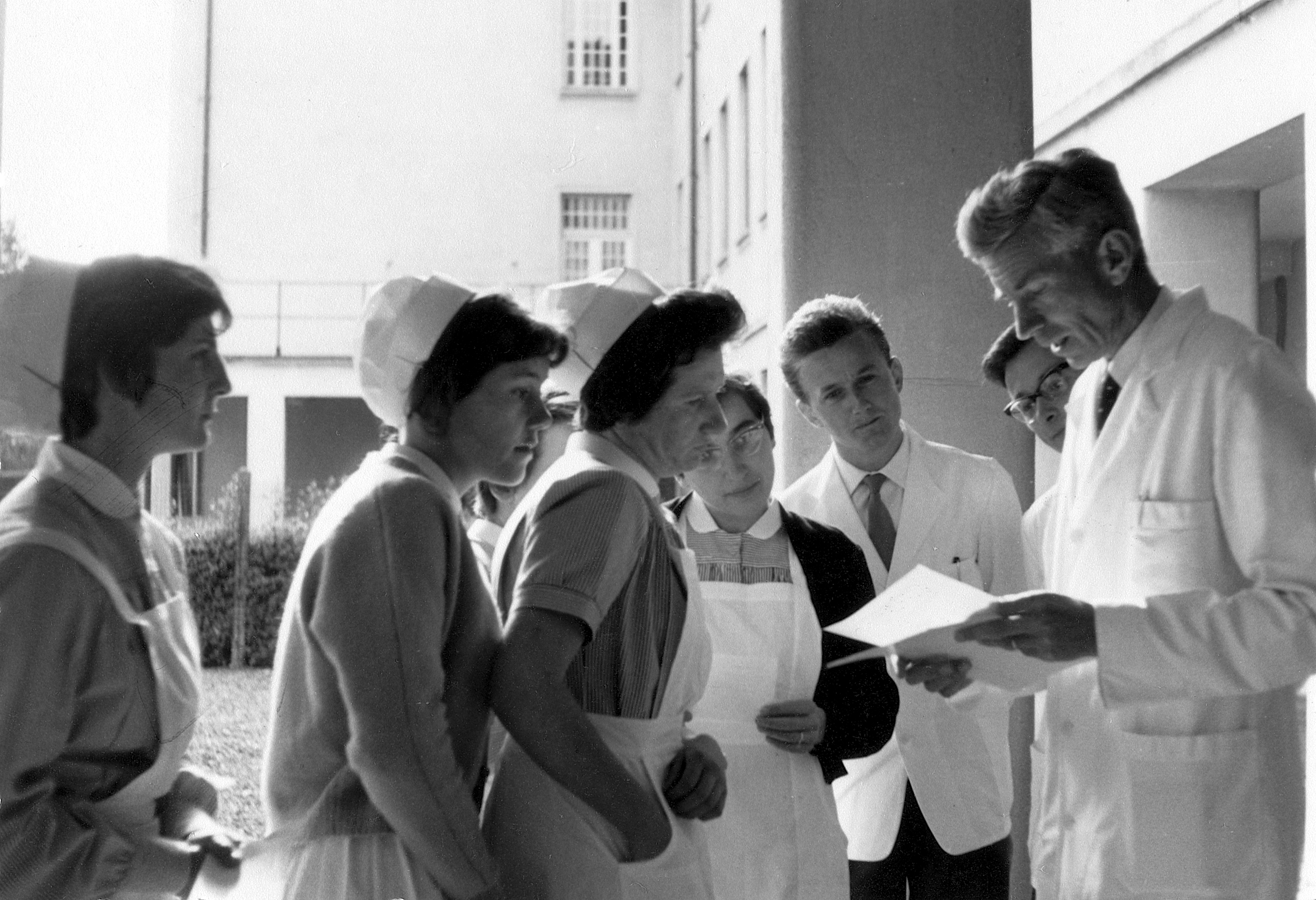Jorge Luis Borges, lecture at the Teatro Coliseo, Buenos Aires, 1977.
For sources and a more detailed history of the dreaming nurses, see Magaly Tornay, Träumende Schwestern: Eine Randgeschichte der Psychoanalyse (Vienna: Verlag Turia + Kant, 2020), 9, 91. All pictures are also taken from the book.
For a comprehensive history of these trials see Marietta Meier, Mario König, and Magaly Tornay, Testfall Münsterlingen: Klinische Versuche in der Psychiatrie, 1940–1980 (Zürich: Chronos Verlag, 2019).
State Archive of Thurgau, 9’40, 1.0.3/0, Diary Kuhn, Vol. 1, 17.12.1971.
Tornay, Träumende Schwestern, 51.
Ibid., 53.
Ibid., 79 f.
Ibid., 75 f.
Ibid., 105 f.
The film was based on the 1921 novel by Jean Webster. Thanks to Rainer Gross for this reference.
Gilles Deleuze and Félix Guattari, Antioedipus: Kapitalismus und Schizophrenie (Frankfurt am Main: Suhrkamp, 2019 (1977)), 122.
State Archive of Thurgau, 4’802’151/475, Interpellation betreffend Abklärung der Verhältnisse in der Psychiatrischen Klinik Münsterlingen (February 1973), 9.
See Camille Robcis, Disalienation: Politics, Philosophy, and Radical Psychiatry in Postwar France (Chicago: University of Chicago Press, 2021.
